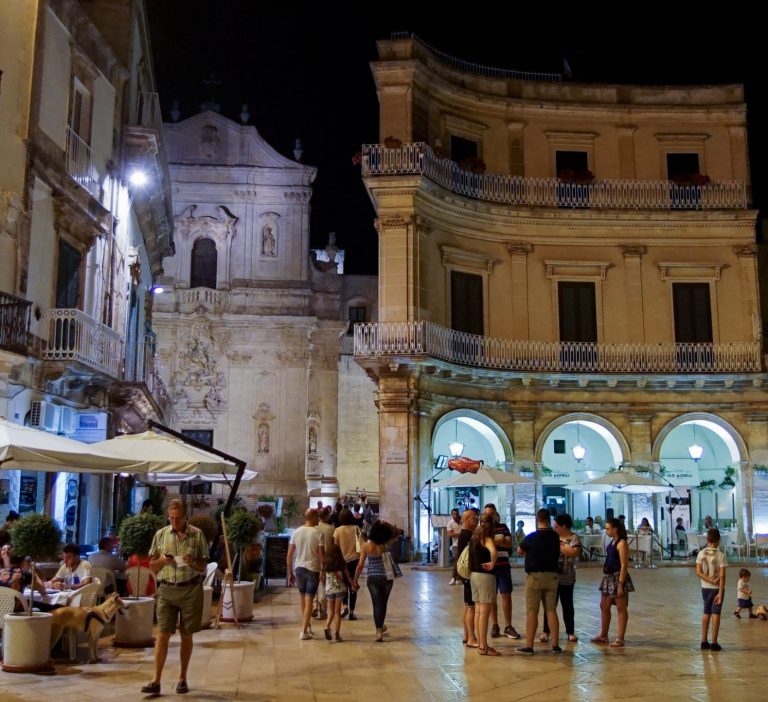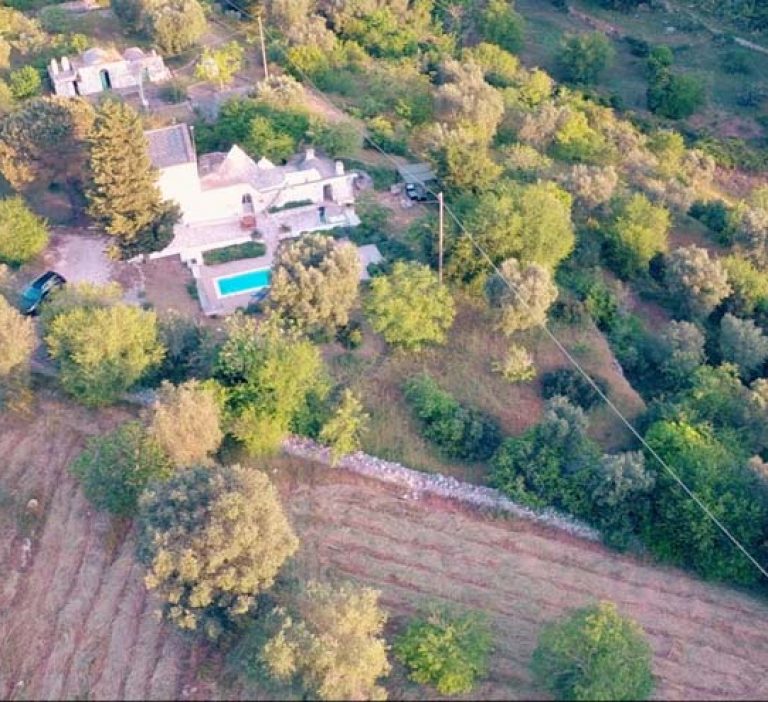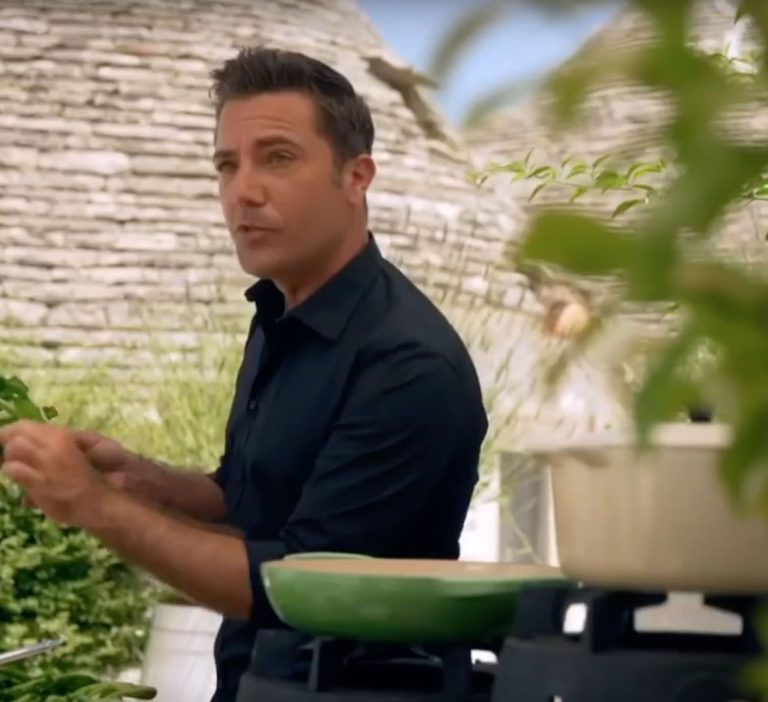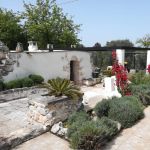Puglia’s microclimate produces some of Italy’s tastiest food – for years appreciated only by the locals. But the south-east’s best-kept secret is becoming a hot destination for gourmet travellers, says Amy Raphael
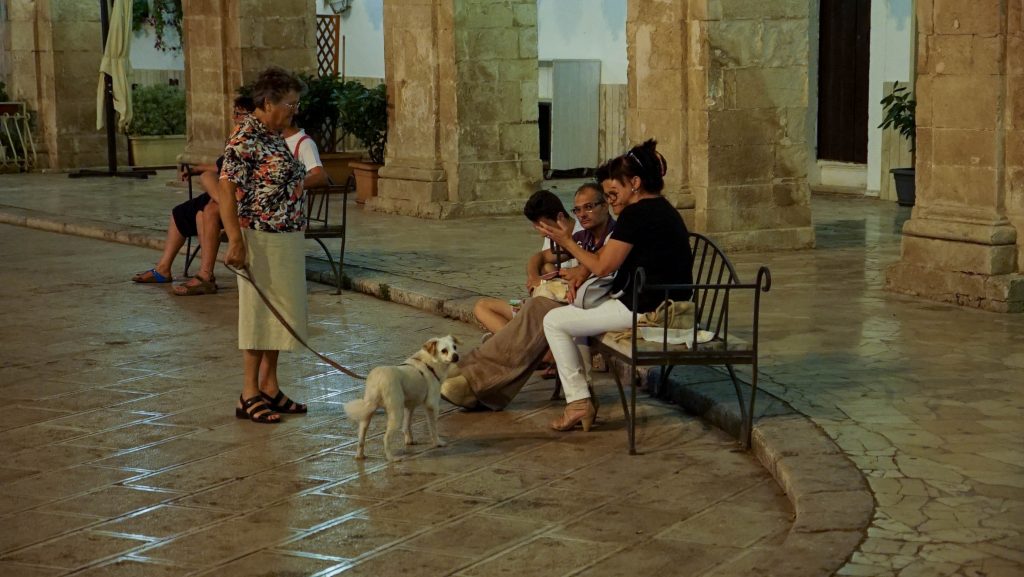
The airport gives it away. On a Saturday afternoon in Bari, there is only one other plane sitting in the shimmering heat and the terminal is little more than a shed. Benvenuti a Puglia – welcome to the heel of Italy, the country’s least-exploited tourist destination, the area most familiar to travellers using the southerly port of Brindisi as a gateway to Greece. Benvenuti a Puglia , which has been conquered by just about everyone, from the Byzantine Greeks to the Romans, the Arabs and the Bourbons.
While tourists have been trailing around Tuscany, the northern lakes and the Amalfi coast, Puglia has been quietly enjoyed by its natives. For it has much to boast about: hundreds of miles of golden beaches with azure water, a breathtaking combination of whitewashed hilltop villages and the Baroque beauty of cities such as Lecce. Plus some of the cheapest, simplest and tastiest food in Italy.
Puglia has a microclimate that ensures sunny weather for much of the year; certainly from April to October it is at least warm enough to wander around without a jacket. Il solleone, the so-called lion sun, and a fertile land allow Puglia to grow intensely flavoured olives, fruit and vegetables in abundance. Thus, it produces much of Europe’s pasta, presses most of Italy’s olive oil, catches the bulk of the country’s fish and makes plenty of good, strong wine – enough, in fact, to be the sixth biggest wine-making region in the world.
Bread, oil and wine are the central forces in the Pugliese diet. It is said that la cucina Pugliese nasce come cucina povera (the cuisine of Puglia was born as the cuisine of poverty) and it is certainly true that this poor area has made the very best of its local produce. Pasta made without eggs, bread made from the local durum wheat our, wild vegetables such as chicory and even the bulb of the wild tassle hyacinth. There are no rules; recipes have long been improvised from what is available.
Advertisement
The River Café’s Rose Gray, who has visited Puglia several times, says the food is different to anywhere else in Italy. On her visits she has eaten some of the best chickpea dishes she has ever tasted and some incredible olive dishes (which she has unsuccessfully tried to re-create back in London – the olives are never good enough). But she is most excited about the hearty, dense bread. ‘It’s the best bread in the whole of Italy. It’s made with semolina instead of wheat and it lasts for seven to 10 days. It just gets better as it ages. It’s in a class of its own.’
Antonio Carluccio, the chef and restaurateur who is based in London but who often talks of his love for his native Aosta valley in the north-west of Italy, fell in love with the south-east last summer. He enjoyed a two-week holiday in the baking August heat in the countryside near the classic, timeless town of Martina Franca, and was most impressed by the speed with which fresh food appears on the plate: ‘What you might call the “industrialisation” of food doesn’t exist in Puglia; food comes straight from the land or sea to be eaten. It isn’t processed, it’s simply fresh and delicious.’
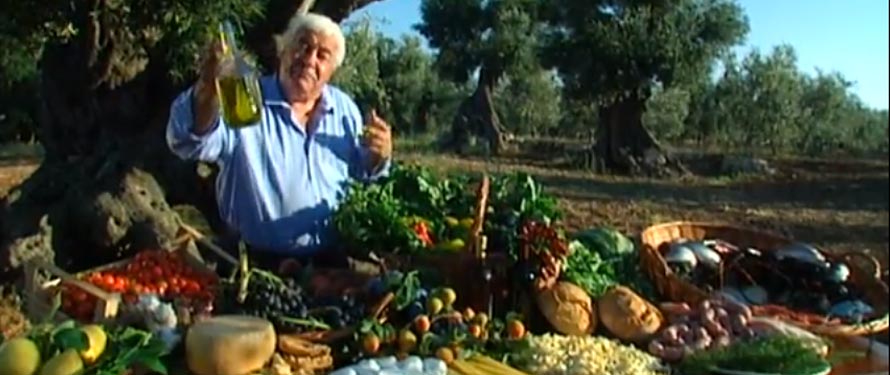
Italy stole my heart when I was a young child: the exquisite women in fur coats plucking my chubby cheeks and cooing, the exotic pear and peach juices in tiny green bottles, the endless ice cream. My mum took me to the lakes, to Florence and Venice, to museums and art galleries and cheap restaurants.
Back in the Eighties, as a 20-year-old, I spent a year in Bologna, a beautiful city between Florence and Venice. The food was great even for a vegetarian – lots of spicy rucola, crispy fennel, lush tomatoes and pasta good enough to eat twice a day – and the wine ridiculously cheap, even for a student.
I loved Italy, yet I knew only part of it. I had unwittingly adopted the attitude of even the most liberal northern Italians: there was nothing worth seeing south of Rome. I knew nothing of the mezzogiorno, the land south of the capital, where it is always midday. When I lived in Bologna, I had a group of friends from Calabria, the south-west tip of Italy that forms the toe of the boot. They had come to the north to find work; there was little money to be made in the sunbaked rural south. I had seen the graffiti telling the Calabrese to go home.
My ignorance came to an end only this spring. Although I made it to Sardinia and Sicily in my twenties, I didn’t even entertain the idea of Puglia till a few years ago. Partly, I suppose, because until then I had heard only miserable things about Bari and Brindisi, big industrial ports with little charm. Given that there can be few secret destinations in the world now, it was perhaps inevitable that the deep south of Italy would finally be explored by tourists. And Puglia, it seems, has had more success than Calabria in becoming a developing region.
Still, I didn’t know what to expect. I was used to northern Italians referring dismissively to their southern cousins as contadini – country men and women, but also, more rudely, peasants. So the airport at Bari comes as no surprise; why would it be more than a shed? I am taken aback, then, within 10 minutes of driving down the coast south of Bari. Here, the sprawling mess of the regional capital gives way to field after field of ancient olive trees beneath whose delicate silvery leaves flourish carpets of vivid yellow flowers.
Puglia is the flattest region of Italy and it is not all nice to look at; some of the terrain is sparse and rocky, with little vegetation growing. But around the loose triangle of Alberobello, Locorotondo, Ostuni and Martina Franca the endless olive groves are wonderful to gaze at. And the towns themselves display little of the poverty I had come to expect of the mezzogiorno.
Apart from its alluring climate (Tuscany in April or October might be pleasant but there’s every chance it will be chilly and wet, whereas Puglia is busy heating up or cooling down at those times), one of the best things about Puglia is the ease with which good, cheap food can be found. Of course, there are lists of established trattorie or ristoranti in the increasing numbers of guide books, but it is also worth taking a more relaxed attitude and just driving around.
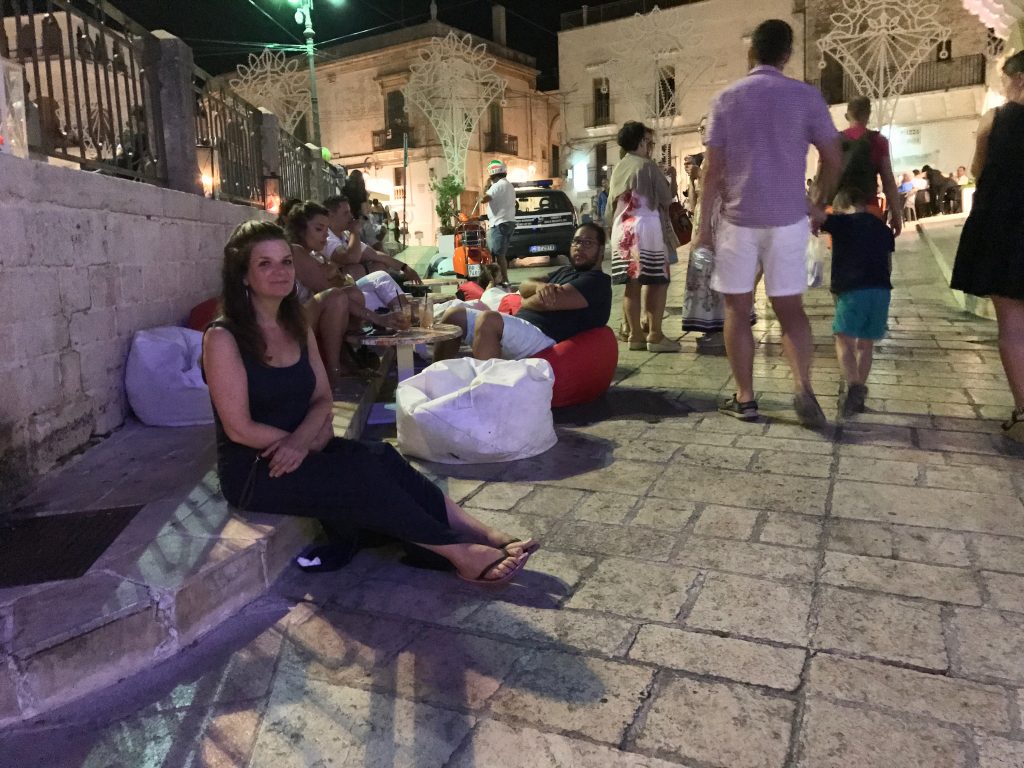
On a warm Sunday in early April, after feasting on a buffet breakfast in our hotel, we drive inland to Locorotondo. The old city centre is full of people wandering around with small olive branches to celebrate Palm Sunday. The winding pedestrian streets are spotless, and outside each front door sit pots of cacti, geraniums and bougainvillea.
The Pugliese are sometimes called the Western Greeks, such is their proximity to north-west Greece. And when the sun beats down on these pretty whitewashed villages, this could indeed be a neglected, undisturbed Greece, where it is a little surprising to overhear English or German.
We find a bar, drink a macchiato, an espresso with a drop of milk in it to make it less bitter. We follow the crowds in their Sunday best to a nearby park and sit and watch. There are some odd fashions, especially the teenage boys in tight, tucked-in white polo necks with Beckham haircuts from 2001, but no sign of contadini .
At La Bottega di Alfredo, a small deli selling mostly organic, local produce, we learn from Alfredo himself that the local red wine is strong and rich, while the less popular white wine should be drunk very cold. He tries to entice us into buying some local wine or Primitivo, the medium-bodied red wine of Greek origin but with a taste similar to California’s Zinfandel grape. He enthuses about the region’s specialities, pointing out shelves of orecchiette, the small ear-shaped pasta that holds sauce so well, and fave, dried broad beans that are made into a purée. But we want to try the food before buying it.
Leaving Locorotondo, we drive towards Alberobello and see the bizarre-looking trulli for the first time. White stone houses with conical roofs, they are thought to have been built for their inner coolness and as a way of using all the stones the contadini cleared from the fields. Some have strange signs in white paint on their roofs, but no one seems to remember their significance. Many of them have been converted into holiday homes, available to rent on a weekly basis.
It is said the trulli were traditionally built of unmortared stone so they could be quickly torn down when the Bourbon tax collector came around, and just as easily rebuilt once he had gone. (Their mythical status certainly attracts the visitors: in Alberobello itself, the most touristy town in Puglia, coachloads of Italians stare in wonder at the clusters of trulli clinging to a hillside. It looks like a fantastical setting for The Lord of the Rings or Star Wars and is ruined by its proliferation of trinket shops.) At about 1pm, we notice a sign off the main road just before Alberobello for ‘Green Park: Agriturismo’. Thinking it might be interesting to take a look and perhaps have a snack, we drive past fields of olive trees and trulli in various states of disrepair. Agriturismo, usually a restaurant reliant on local produce with a few rooms above to rent, is usually the sign of decent food, but there are varying degrees of sophistication.
We arrive at Green Park to discover a huge restaurant packed with extended families. As with many inner-city trattorie, where locals are given a verbal list of the specials each day, there is no menu at Green Park. We are shown to a table at the back where there is already a bottle of ice-cold, fizzy mineral water, some red wine with no label and a plastic plate of fried, salted fave.
On the walls are ‘no smoking’ stickers and no one smokes. At the end of 2003 a new law came into effect banning smoking in most public places. Restaurant and bar owners can provide smoking areas but individuals know if they smoke in non-designated areas they face fines of up to €250 – or double if they smoke near a child or pregnant woman. There may be no smoking but there is plenty of good wine to be drunk. For a house red, the vino locale has a good, robust flavour and lacks any of the bitterness that can come with cheap wine. The waiter appears balancing several small plates. There is bruschetta with tomatoes and oil, salami and burrata, Puglia’s most famous cheese. A round cheese filled with a rich cream, it is good enough to eat alone: dip the shiny skin into the creamy interior and let it melt in your mouth.
A few minutes later, more plates arrive. Moist focaccia soaked in olive oil and tomatoes; fried zucchini with an anchovy dressing; mushrooms and artichoke hearts sprinkled with at-leaf parsley. On the side of the plates are stains of dark green extra-virgin olive oil; the dense, peppery flavour permeates all the dishes.
The food is fresh and the flavours strong; even though we ate a good breakfast, we empty the plates. Every time we think the lunch must be over, more dishes arrive. Pancakes stuffed with spinach, mushrooms and ham; generous slices of aubergine layered with tomato and pork; cicoria con pure di fava: puréed broad beans with braised chicory so tender it might be asparagus, the bitterness of the chicory balanced perfectly by the sweetness of the broad beans and the fruitiness of the olive oil. This perfect culinary moment is disturbed only by a plate of tripe swimming in a broth. Even my carnivorous boyfriend is appalled and we have to politely ask the waiter to take it away.
After we have eaten what we can – the puréed fave, one of Puglia’s main dishes, which must owe something to Greek houmous, is too delicious to leave but we start to struggle with everything else – I ask the waiter, almost as a joke, if there is more to come. He laughs and says we have barely started. And he is right. There is still il primo piatto of a very light lasagne stuffed with tomatoes and pork; a plate of the freshest fennel, sliced but without any lemon or pepper; orecchiette with a tomato and meat sauce.
It becomes embarrassing. A group of six Italians in their early twenties arrive at the next table and turn on their portable radio to listen to the football. We watch as they share between them all the antipasti that we have had between two of us. As we watch, il secondo piatto arrives on our own table: veal faggots in tomato sauce and then lamb on skewers are presented with a basic salad of lettuce leaves. We see slices of melon, chocolate cake and espressi in tiny plastic cups on other people’s tables and say ‘basta!’ Enough! The waiter offers us an amaro, a bitter liqueur, but we have barely drunk half the bottle of wine.
Just as we hear Roma beat Lecce on the radio, the bill arrives. The meal – the food, drink, everything – costs €25. The price is incredible; less than £10 each. Italy has always been cheap for the travelling Brit, but never this cheap, and for top-quality local produce, too. As we walk slowly to the car – tempted to rent a room in which to have a much-needed siesta – we feel truly sated. But we do wonder if we will ever be able to eat again.
Over the next few days, all we seem to do is eat and lounge around our hotel. La Masseria San Domenico is an immaculate venue built near the coast, 40 minutes’ drive south of Bari (a masseria is a fortified farmhouse dating back to all those years of invasion). One of less than a handful of five-star hotels in Puglia, San Domenico is a haven of decadence and indulgence hidden behind electric gates. From the huge seawater pool to the tennis courts and extensive gardens (including wild meadows littered with poppies and fields of olive trees – the masseria produces its own olive oil), it could easily be in Tuscany.
San Domenico may be an oasis of tranquility – it attracts the likes of Sven- Göran Eriksson, whose fiancée, Nancy Dell’Olio, is from Puglia – but it is situated in a very real part of the region. The sandy beaches don’t start for a good few kilometres and the coastline is rugged and unrefined; just a few minutes down the road, we discover fishermen selling ricci – sea urchins in small makeshift bars. The men with tough, rusty skin hold out plastic bowls of ricci; they look quite beautiful inside their prickly shells, but not even the rainbow colours and the offer of a cold beer could tempt us.
The food at San Domenico is nearly all local and we eat some wonderful fish (sea bass and red mullet), more cicoria con pure di fava, chickpeas with hot, juicy olives and delicate poached pears with home-made ice cream. Their buffet breakfast is an altogether more informal experience (platters of fruit, cakes, breads, cheeses, meats and jugs of chilled fresh juices).
Puglia is not, as some try to claim, the new Tuscany. It is simply a very real part of Italy, where the solleone shines for longer and where the food is fresh, simple and cheap. I lost my heart to the north of Italy but shall certainly be returning to the south.
Fresh cannellini beans (fagioli sgranati)
serves 8
3kg fresh, unshelled cannellini beans
3 litres room-temperature water
4 tablespoons best available extra virgin olive oil, plus additional
oil for drizzling
4 cloves garlic, unpeeled
handful fresh sage leaves
a few black peppercorns
salt
freshly ground black pepper
Shuck the beans then place them in a medium heavy-bottomed soup pot. Add the water, olive oil, garlic, sage leaves and peppercorns. Bring to a low simmer over a medium heat, then cover partially and simmer until the skins are tender and the interior soft but not mushy (about one hour). Salt after the beans have cooked for 45 minutes. Cool to warm then drain and drizzle abundantly with the best available extra virgin olive oil and season with salt and freshly ground black pepper.
Tagliata with rocket and Parmesan (Tagliata con rucola e Parmigiano)
serves 8
3 x 800g T-bone or porterhouse steaks, 5cm thick, cut from the rib with the bone
4 tbs extra-virgin olive oil
8 handfuls tender young rocket leaves, roughly chopped
115g Parmesan cheese, cut into thin shavings
salt
freshly ground black pepper
Remove the meat from the refrigerator two to three hours before grilling. Prepare a medium hot barbecue or grill. Set the meat on the grill about 12cm above hot, but not flaming, embers or coals.
Grill for 5-7 minutes, until the exterior is brown and juicy. Turn the meat over (without piercing it) and sprinkle with salt. Cook for another 5-7 minutes, then turn the meat over once again and salt. The meat should be well-browned on its exterior and pink and juicy inside.
Transfer the steaks to a wooden cutting board and cut against the grain into 2cm strips, removing the bone. Arrange the strips on a serving platter, drizzle with olive oil and cover with any juices accumulated on the cutting board. Season generously with freshly ground pepper, scatter with rocket and Parmesan and serve.
This article first appeared in The Guardian, Sunday 27 June 2004

